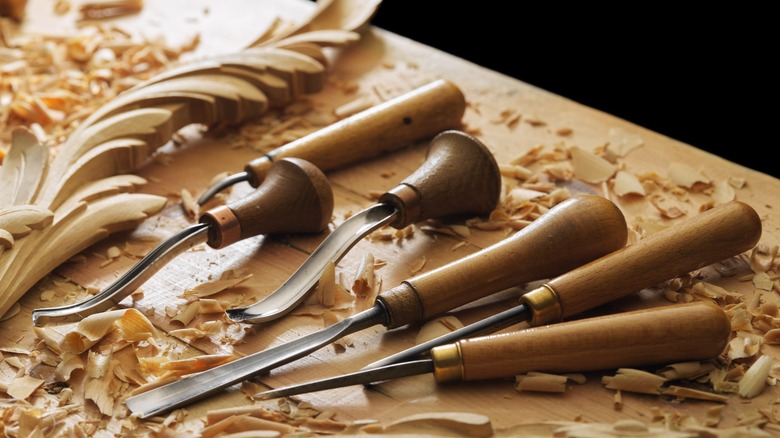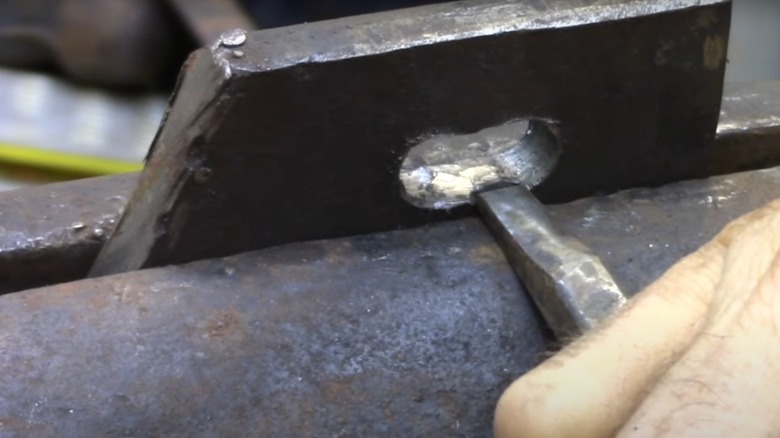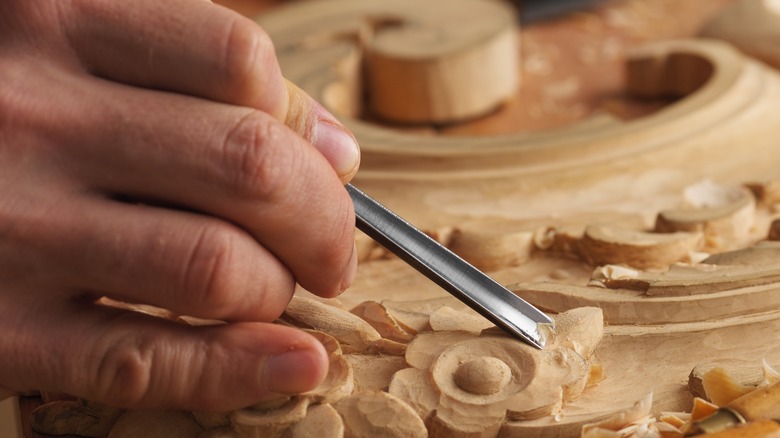The Difference Between A Chisel And A Cold Chisel Tool Explained
Among DIY-ers, doing the job well often boils down to having the right tool to do the job. Skill alone simply isn't enough. We know there are tools every homeowner should own, and for those people who do woodworking, the chisel is one of them. You'll use this tool to perform cuts where you need to remove small chunks of wood carefully. Making use of a high-quality chisel can be a key tip to help beginning woodworkers perform the precise cuts they need to make for even the most basic, beginner-level woodworking projects.
However, not all chisels are made the same, as they don't all work on wood. Some are made for use on concrete, masonry, and brick. A more heavy-duty design called the cold chisel, has a design made for working on metal, whether you need to cut grooves in sheet metal, chip out bolts and nails, or remove debris from the corners of metal boxes.
Going back to what we discussed earlier about having the right tool for the job, you don't want to use a cold chisel to remove pieces of wood or vice versa. If you use an inappropriate tool for a particular job, you could damage the tool, end up with injuries, or find the outcome of the final job unsatisfactory. Understanding the right situation to use each type of tool is key, and we'll break down the key differences between the wood and cold chisel designs.
Physical differences between wood chisels and cold chisels
You can trace the origins of the chisel back about 8,000 years, as this is a common tool with a simple design, regardless of which type of material you are shaping or cutting with it. The design includes a handle, usually consisting of plastic, metal, or wood. The blades can consist of many types of metal, including chrome, steel, and vanadium.
The wood chisel has an extremely sharp blade. This allows the blade to easily penetrate all types of wood, delivering precise cuts that can be extremely thin when necessary. The blades are available in varying widths, so you can control the amount of wood you remove with each cut. The angle of the bevel at the tip varies, too, usually between 15 and 30 degrees, so you can match the type of cut you want to make with the angle of the bevel. Lower angles of 15 degrees allow for extremely thin strips versus 30 degrees, which are more suitable for less precise tasks.
The cold chisel's handle nearly always consists of metal. It has a cutting edge too, but its blade angle is less acute than the wood chisel. This type of design delivers an extremely strong blade, which is necessary for cutting metal, but it's not as sharp. Because of this, you may want to use a little bit of machine oil on the tip of the blade to help it move through the metal more easily.
Different uses for a wood chisel and a cold chisel
The wood chisel works by either pressing the blade into the wood with hand pressure or by tapping the handle with a hammer or mallet. A few different designs are available. The bench design works for general woodworking, including chopping or paring. The mortise wood chisel design has a thick blade that simplifies your ability to make straight cuts in the wood.
You'll only use the cold chisel on cold metals, meaning materials not heated with a torch or forge. The cold chisel blade consists of carbon steel or stainless steel, and you'd want to select stainless steel for jobs where you have a concern about the potential for rust. You'll strike the handle with a hammer to use it. Different designs work for different types of jobs with this particular tool. The flat design allows you to cut sheet metal, bolts, bars, and rods, for example. The cross-out design makes it easier to create grooves and slots in the metal, thanks to the narrow design of the blade.


